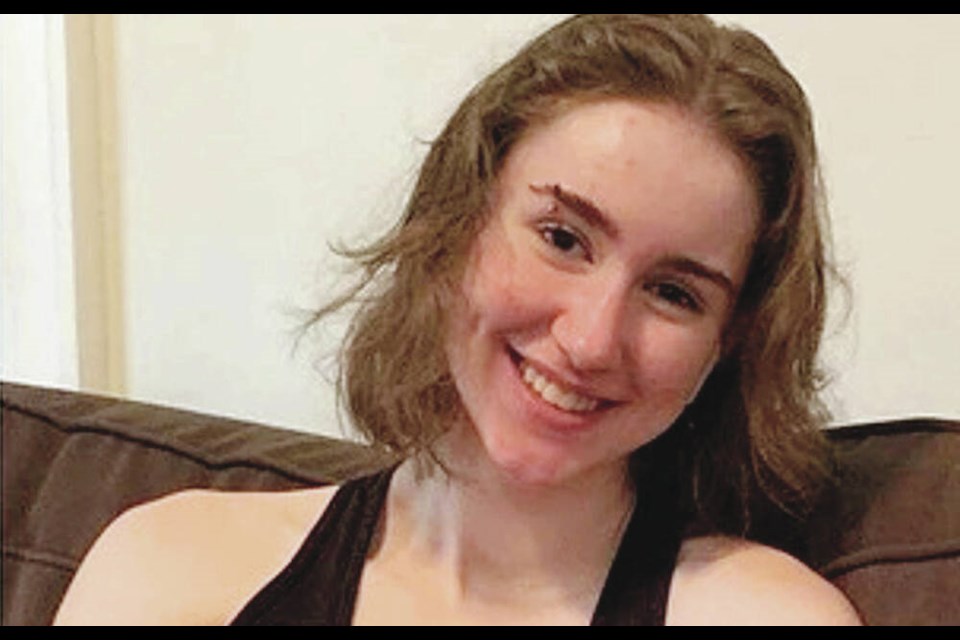The University of Victoria Students’ Society is calling for opioid-overdose-reversing naloxone kits on campus residence floors and mandatory naloxone training following the fatal overdose of a first-year student.
Isabelle Easton, director of campaigns and community relations for the students’ society, said the group is looking into having mandatory training for all students during orientation at UVic, in partnership with university administration.
The students’ society offers free monthly naloxone training; 60 people were trained in the last three workshops, Easton said. “Prevention wise, we believe that all people on campus should be trained” and given naloxone kits, she said.
Eight years after the province declared toxic-drug overdoses a public health emergency, the university needs to be more candid and responsive, Easton said.
“I think that there needs to be more tangible, more accountable, and more transparent communication from the university that it’s an actual problem not only in our province, but it’s a problem on our campus.
UVic science student Sidney McIntyre-Starko, 18, and a friend went into cardiac arrest in a student dorm room on Jan. 23 after apparently taking drugs that were laced with fentanyl, according to a Vancouver Sun story.
There were no naloxone kits at the residence and 911 records show security staff didn’t administer the overdose-reversing drug or initiate CPR for several minutes, despite signs both women were having trouble breathing.
Once administered, naloxone revived one student, while McIntyre-Starko was revived via an adrenaline shot and CPR. But she was severely injured and was taken off life support on Jan. 29.
Canada’s Centre for Addiction and Mental Health says naloxone, which blocks the effects of drugs such as fentanyl, heroin and oxycodone, is a relatively safe drug. Giving it to a person who is unconscious because of a non-opioid overdose is unlikely to cause harm, it says, though it won’t reverse overdoses caused by alcohol or cocaine.
“We firmly believe that drug-related deaths are preventable and should never ever happen on campus,” said Easton. “[McIntyre-Starko] shouldn’t have died.”
Easton said many students are disappointed with the way UVic responded.
Days after the overdose, the university sent two notices to students and posted one on its website warning of the unsafe drug supply in B.C. and giving information about where naloxone can be found on campus, but never mentioned that two students had just overdosed in a dorm.
“If you or someone around you begins showing any signs of overdose or over-intoxication on campus, please call Campus Security right away,” says the Jan. 26 email.
Easton said the students’ society does not have access to campus residences and would not be able to supply them with naloxone except through a partnership with the university.
“We definitely believe that there should be naloxone accessible on residence floors and in residence buildings” for easy access in an emergency, she said.
The students’ society also wants to see the province provide easier-to-use nasal spray (Narcan) naloxone kits, in addition to the injection version.
Jim Dunsdon, UVic associate vice-president for student affairs, said the university takes a harm-reduction approach that includes educating students, staff and faculty about available resources, emergency protocols, and the risks involved with substance use.
“Training and supports are widely available through UVic’s Wellness Services, the University of Victoria Students’ Society (UVSS) and throughout the community,” Dunsdon said in a statement. The campus-wide notice about drug use was in development “prior to this tragic event and validated by the B.C. Coroners report that happened around the same time.”
UVic said it will continue to have naloxone available to students through its Wellness Centre, where students can access overdose-prevention and safer-use supplies and drug-testing strips anonymously and for free. Naloxone kits are available at Wellness Services, the Heart Pharmacy on campus, as well as in the Harm Reduction Centre in the Student Union Building.
The university said it will enhance its pre-arrival and in-person orientation programs and year-round communication on where students can access naloxone.
UVic said that it provides free naloxone training regularly and by request, and is looking to expand naloxone locations on campus “with a specific focus on our residence community.”
The university said there are rules around substance use in residence but it wants all students to know they should always ask for help when they need it, without fear of discipline or academic sanctions.
UVic security officers are trained in first aid, “with most officers — including those who attended to Sidney — trained in [Occupational First Aid Level 2],” said UVic. It’s a 36-hour course, the second of three levels of occupational first aid.
“This level of qualification goes beyond what is required by government policies,” said UVic.
Campus Security has identified the importance of bringing training in-house to ensure greater availability of customized training and will be hiring a training co-ordinator who will provide oversight, the university said.
UVic said it recommends students, staff and faculty call 911 and Campus Security in emergencies.
“Our security team is not a replacement for 911 and we continue to promote the importance of 911 even when on our campus.”



